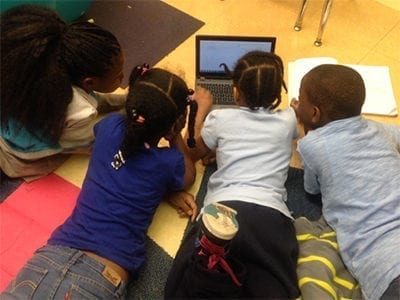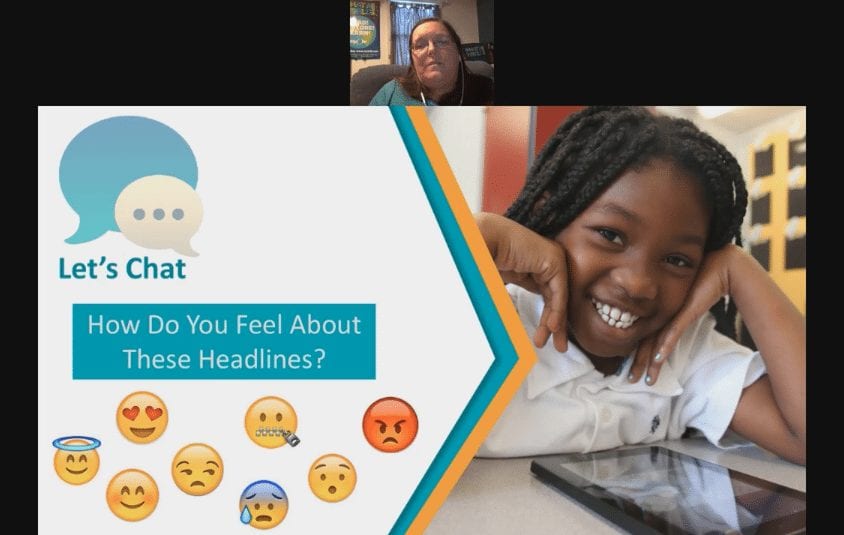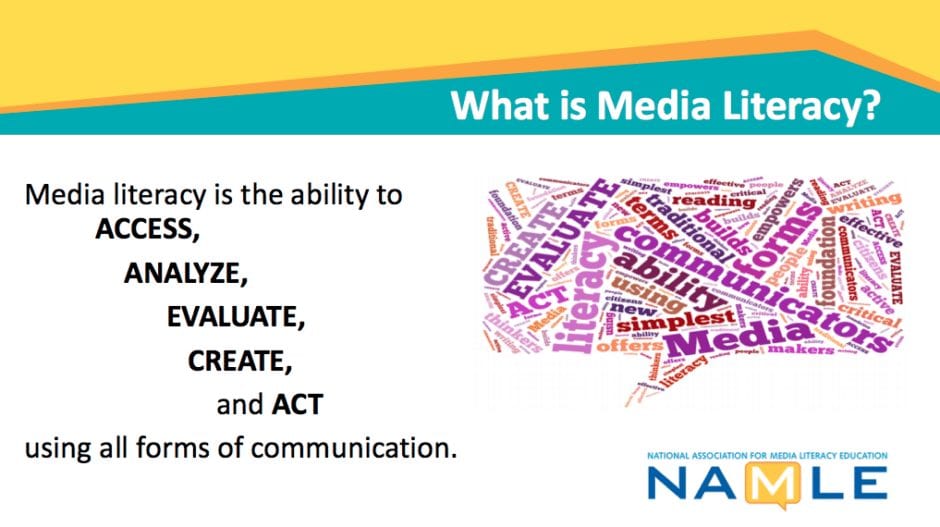Give Students the Tools and Skills They Need for Media Literacy
Media literacy is more important today than ever. It is a critical skill for students of all ages, especially because teenagers spend an average of nine hours a day on media that doesn’t include schoolwork or homework. Educators must give students the tools and skills they need to decipher between reliable and unreliable sources of media. Susannah Moran, Senior Project Manager at myON, presented tips for providing students with these important media literacy skills in “Teaching Media Literacy in the Classroom.”
The National Association for Media Literacy Education defines media literacy as the ability to access, analyze, evaluate, create, and act using all forms of communication. According to ISTE, the elements of being a good citizen include, for the most part, many of the same components as being a good digital citizen: advocate for equal human rights, treat others with respect, work to make the world a better place, etc. However, digital citizenship in today’s world requires specific tools and strategies to be able to do these things.
When talking about access to tools, quality matters. Tools must be able to provide students with information that is current, reliable, non-partisan, and vetted. This criteria should serve as a model for students so that when they see something that doesn’t meet it, they can spot the difference. Students should be able to analyze and evaluate sources too. Educators can look at different news stories with their students to determine who created the message, why the message was made, where it was distributed, what techniques were used to grab attention, what points of view are represented, and more.
If students move from being content consumers to content creators, they can better understand the choices made by the media and why. In one activity, students can become costume designers of movie characters, and explain why they dressed the character that way based on a close reading of a portion of the script. In another activity, students can use various sources to find news stories, write scripts, and present the news to their class or school. This gives them perspective as to why certain stories get broadcasted while others don’t. By creating and sharing their own content, they can begin to understand what they encounter in the media every day.
Students hear and see things in their community outside of school, so collaborating with families is essential. “(Parents’) attitudes about learning, reading, literacy, and media impact their children much more than any of the work we’re doing in school,” said Susannah. Bring parents into school and talk with them about the conversations they can have with their children on the importance of media literacy. Within the classroom, teaching media literacy should become a routine part of the day. Plan ahead, and embed lessons and skills into the lessons you’re already teaching. By providing students with the tools they need, and teaching the right skills regularly, students can develop strategies to identify reliable media sources on their own.
This broadcast was hosted by edWeb.net and sponsored by myON.
This article was modified and published by eSchool News.
About the Presenter
Susannah Moran is the senior project manager for myON. Susannah began her career as a New York City English teacher and literacy specialist. In 2001, she joined a staff development company, TechKNOW Associates, where she worked as a mentor and professional developer for schools throughout New York and around the country. She has worked in hundreds of schools, integrating technology into teaching and learning and providing onsite support for teachers. Susannah has worked with myON for the past four years, providing workshops and push-in support, managing pilot programs, and developing project-based learning curriculums.
Join the Community
Building a Community of Readers is a free professional learning community that provides a place where educators can collaborate on literacy instruction.






Comments are closed.